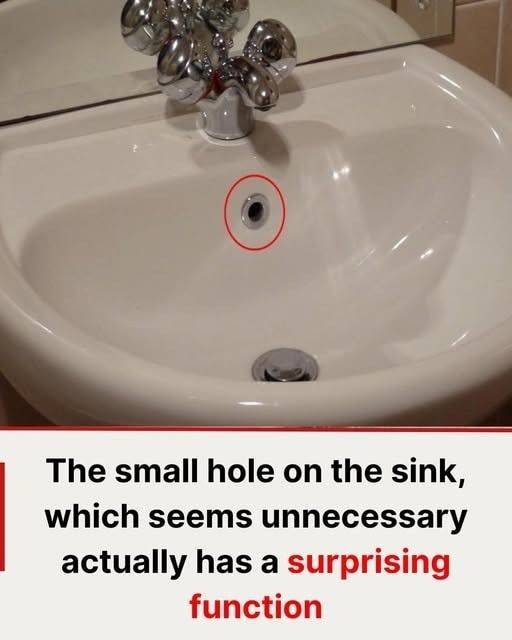Sinks are a fundamental part of daily life, yet many of their features go unnoticed. One such feature is the small hole located just beneath the faucet in many bathroom and kitchen sinks. Have you ever wondered what it’s for? This unassuming hole, known as the overflow hole, plays a crucial role in the functionality of your sink. Understanding its purpose, benefits, and maintenance can help ensure your sink remains in excellent working condition.

The overflow hole is designed to prevent water from spilling over the sink’s edge by acting as a secondary drainage system. If the water level rises too high, the overflow hole kicks in, redirecting excess water through a small pipe connected to the main drainage system. This simple but effective feature helps prevent water damage, ensuring that your countertops, cabinets, and floors remain dry even if the faucet is accidentally left running.
This feature is particularly useful in preventing accidents. A clogged drain or an unattended faucet can lead to an overflow, but the overflow hole provides a safeguard against these issues. Without it, even a small mistake could result in costly water damage. Whether you’re distracted by a phone call or momentarily step away, this small hole works as a built-in safety net, saving you from potential disasters.
Beyond preventing overflow, the overflow hole also contributes to the cleanliness of your sink. While washing hands, dishes, or other items, water often splashes around the basin, leading to standing water in certain areas. If left unattended, stagnant water can become a breeding ground for bacteria and mold. The overflow hole facilitates better water circulation, reducing the buildup of standing water and helping to maintain a more hygienic sink environment.
Maintaining the overflow hole is crucial to keeping your sink functioning efficiently. Over time, debris, soap scum, and other residues can accumulate inside the hole, leading to blockages or unpleasant odors. To prevent this, regular cleaning is necessary. Using a small brush, pipe cleaner, or even a cotton swab, gently remove any visible dirt from the overflow hole. Then, pour boiling water down the hole to flush out any grease or buildup. Including this simple step in your cleaning routine ensures that the overflow hole remains clear and odor-free.
If you ever notice a foul smell coming from your sink, the overflow hole may be the source of the problem. A natural and effective way to eliminate odors is by using a mixture of baking soda and vinegar. Simply pour a cup of baking soda into the overflow hole, followed by a cup of white vinegar. The fizzing reaction helps break down organic materials causing the odor. Let it sit for about 15 minutes, then rinse with boiling water to remove any remaining residue. This method is not only easy but also environmentally friendly, leaving your sink smelling fresh and clean.
To ensure your sink remains in optimal condition, make it a habit to inspect the overflow hole regularly for any blockages or debris buildup. A well-maintained overflow hole improves functionality and extends the lifespan of your sink, saving you time and money on potential repairs. Small preventive measures can make a big difference in avoiding future plumbing issues.
You may be surprised to learn that the overflow hole is not a modern invention. Early sink designs incorporated similar features to prevent spills in communal washing areas. As plumbing systems advanced, the overflow hole became a standard component in household sinks, demonstrating how simple yet effective innovations can stand the test of time. Today, it remains a vital part of sink design, providing both safety and convenience in everyday life.
While the overflow hole may seem like a minor detail, it plays an essential role in maintaining a functional and hygienic sink. By understanding its purpose and incorporating simple maintenance steps into your routine, you can prevent accidents, reduce odors, and extend the life of your sink. So next time you glance at that small hole beneath your faucet, take a moment to appreciate it—it’s an unsung hero in your kitchen or bathroom, quietly working to keep your space clean and safe.





